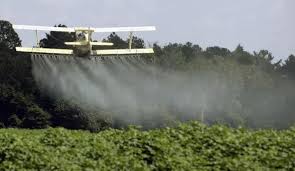
Breaking News
 Grand Theft World Podcast 257 | Foreign Affairs with guest Ernest Hancock
Grand Theft World Podcast 257 | Foreign Affairs with guest Ernest Hancock
 You've Never Seen Tech Like This
You've Never Seen Tech Like This
 Supreme Court Won't Exempt California Schoolchild From Vaccination Mandate
Supreme Court Won't Exempt California Schoolchild From Vaccination Mandate
 Visualizing the abundance of elements in the Earth's crust
Visualizing the abundance of elements in the Earth's crust
Top Tech News
 3D Printed Aluminum Alloy Sets Strength Record on Path to Lighter Aircraft Systems
3D Printed Aluminum Alloy Sets Strength Record on Path to Lighter Aircraft Systems
 Big Brother just got an upgrade.
Big Brother just got an upgrade.
SEMI-NEWS/SEMI-SATIRE: October 12, 2025 Edition
 Stem Cell Breakthrough for People with Parkinson's
Stem Cell Breakthrough for People with Parkinson's
 Linux Will Work For You. Time to Dump Windows 10. And Don't Bother with Windows 11
Linux Will Work For You. Time to Dump Windows 10. And Don't Bother with Windows 11
 XAI Using $18 Billion to Get 300,000 More Nvidia B200 Chips
XAI Using $18 Billion to Get 300,000 More Nvidia B200 Chips
 Immortal Monkeys? Not Quite, But Scientists Just Reversed Aging With 'Super' Stem Cells
Immortal Monkeys? Not Quite, But Scientists Just Reversed Aging With 'Super' Stem Cells
 ICE To Buy Tool That Tracks Locations Of Hundreds Of Millions Of Phones Every Day
ICE To Buy Tool That Tracks Locations Of Hundreds Of Millions Of Phones Every Day
 Yixiang 16kWh Battery For $1,920!? New Design!
Yixiang 16kWh Battery For $1,920!? New Design!
 Find a COMPATIBLE Linux Computer for $200+: Roadmap to Linux. Part 1
Find a COMPATIBLE Linux Computer for $200+: Roadmap to Linux. Part 1
Not-So-Superfood? Pesticide Residue Found In 70% Of US Produce & 92% Of Kale

According to data from the US Department of Agriculture and analyzed by the Environmental Working Group, strawberries, spinach and kale have the heaviest pesticide presence, while sweetcorn, avocados and pineapples had the lowest presence.
In news likely to send anxiety attacks across vegan circles, more than 92% of kale that was tested had two or more pesticide residues in it. A sample of any conventionally farmed kale could contain "up to 18 different pesticides", according to the report.
Dacthal was the most common pesticide found. It was detected in about 60% of kale samples and is banned in Europe and classified as a possible carcinogen in the U.S.
Alexis Temkin, a toxicologist working with the EWG, said:
"We definitely acknowledge and support that everybody should be eating healthy fruits and vegetables as part of their diet regardless of if they're conventional or organic. But what we try to highlight with the Shopper's Guide to Produce is building on a body of evidence that shows mixtures of pesticides can have adverse effects."



